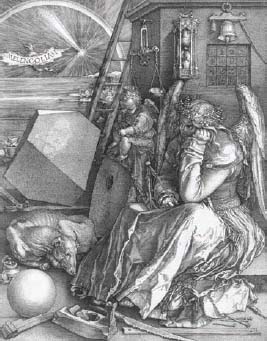The Early Modern World, C. 1300–1600Sixteenth-Century European Art and Architecture |
What is El Escorial? |
El Escorial is an enormous monastery-palace built by Spanish king Philip II in Madrid between 1563 and 1584. Philip II took over control of Spain after his father, the Holy Roman Emperor Charles V, abdicated. Philip was therefore one of the most powerful rulers in Europe, controlling territories in Spain, the Netherlands, Milan, Burgundy, Naples, and even the Americas. Philip II was a devout Catholic and El Escorial combined a seminary, convent, and basilica with a royal palace. The main architect was Juan Bautista de Toledo until his death, when Juan de Herrera took over, eventually completing the project. The building design is reminiscent of Italian Classicism, but it is formidable and severe, reflecting the power of the Spanish crown.

The German painter and draftsman Albrecht Dürer is known for his immaculate realism and interest in drawing and printmaking. Melancholia I (1514) is an engraving that explores themes of creativity, inspiration, and depression.
